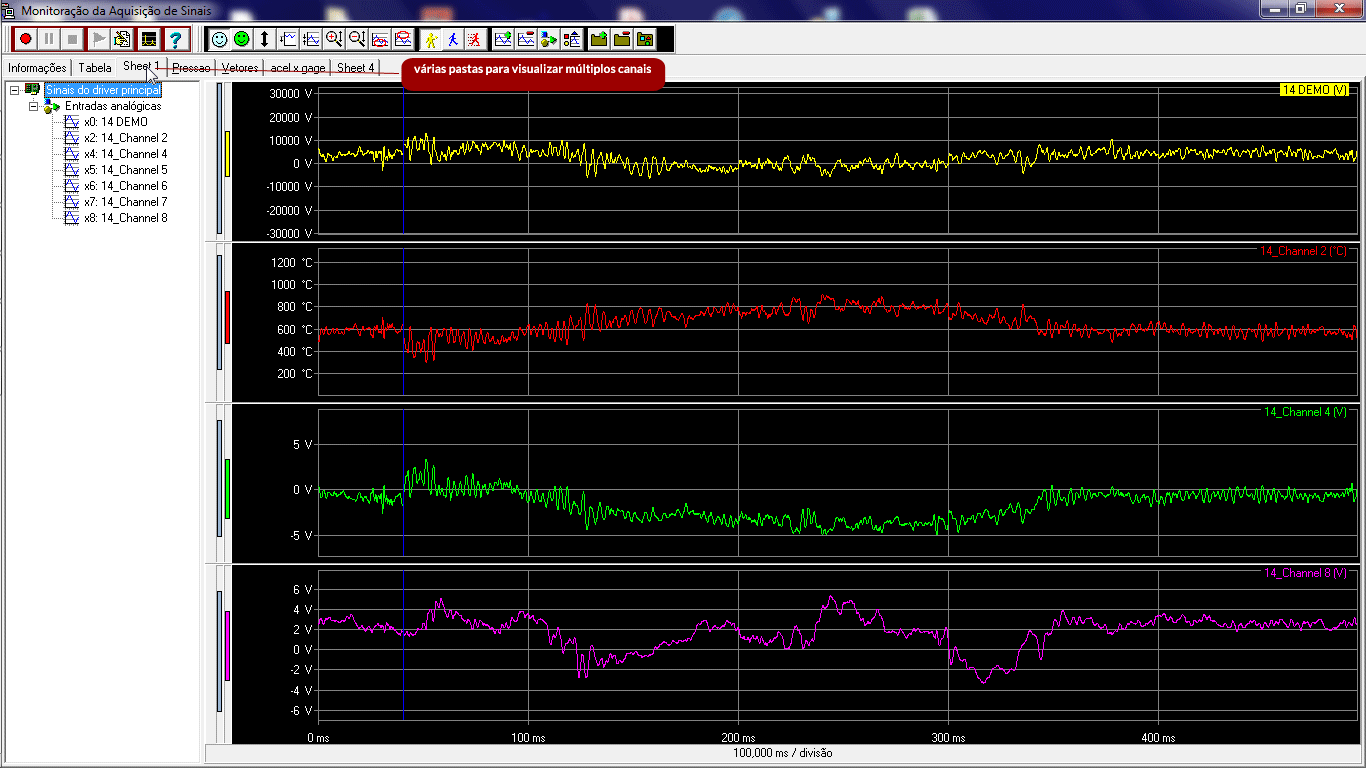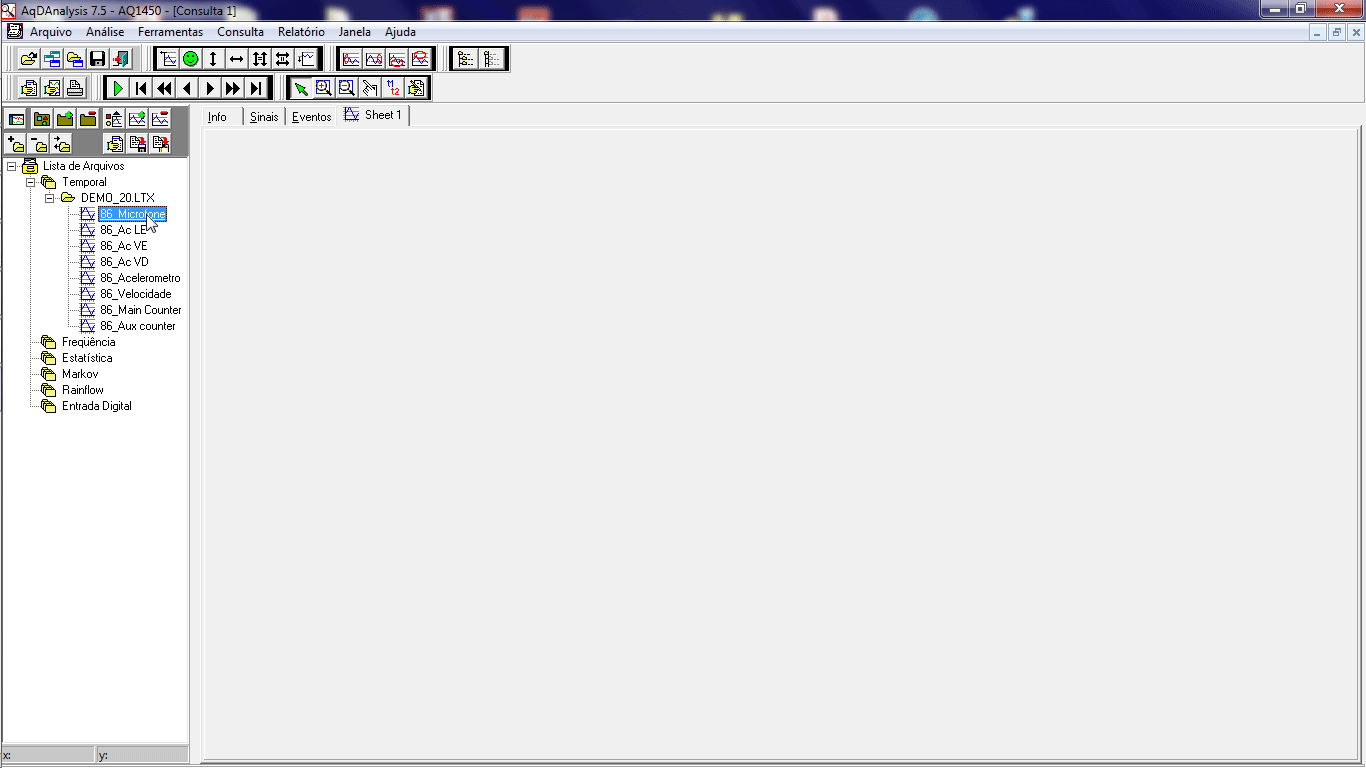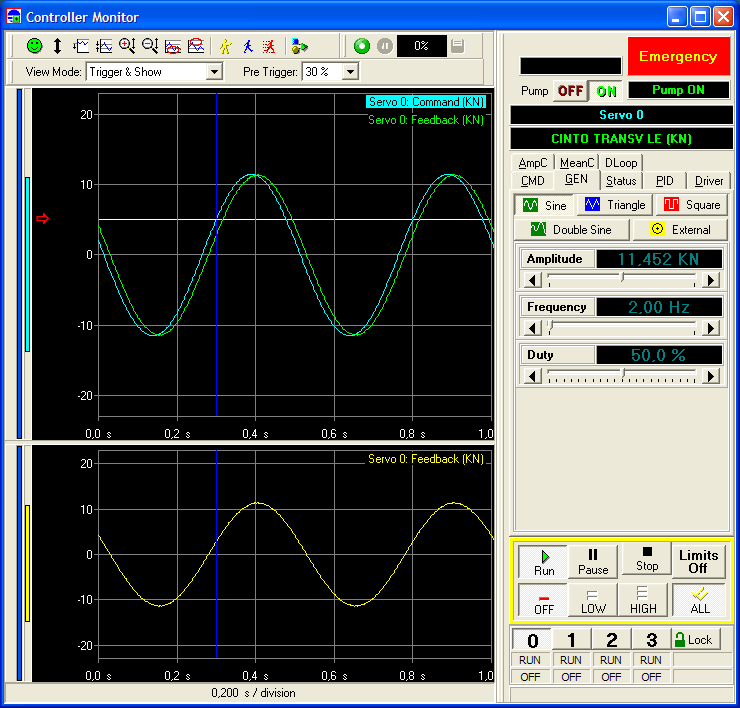Software |
|
| |
 |
| |
|
Lynx has developped its own set of software for its products. For download, license purchaseand hardkeys, please contact us.
|
| |
| |

|
Lynx AqDados
AqDados, from Lynx Technology, in its current 7th version, is more user friendly with new features:
-
Multiple sheets to quick visualization during acquisition;
-
Multiple types of graphics;
- New reports;
- New interface;
- Easy selection of files and signals (drag and drop);
-
Integrated signal processing functions;
- RPC (MTS) and BIN (Catman-HBM) file format support.
A.0. BASIC CONFIGURATION
- selectable sample rate (the same for all channels);
-
up to 256 input channels;
-
engineering units and identification of each channel;
-
input calibration using linear regression;
- programmable signal conditioner control: balance and shunt cal;
- signal linearization: thermocouplers, other sensors;
- streaming to disk, the disk is the limit, acquisition sequence programmable;
- up to 16 sheets (or panels) with up to 8 channels during acquisition;
- 1 sheet with FFT spectra in real time;
- multiple graphic options to visualize data;
-
time charts, XY charts. Up to 4 windows with 16 sheets each. Each sheet supports 16 channels;
-
cursor mode;
-
zoom in and out;
-
reports;
-
paper recorder simulation;
-
signal editing;
-
- filtering;
- mean removal.
|
|
|
|
| |
Brochure - Data Acquisition System |
 |
Ask a quotation |
|
| |
|
|
|
|
| |

|
Lynx AqDAnalysis
MORE DETAILS →
AqDados/AqDAnalysis programs control and configure the equipment, read, record, retrieve, visualize and process the data. These programs have an intuitive and simple interface, and is considered as one of the most user friendly for field work. They are ready to be used, no need to waste time developing any additional application.
A.1 – BASIC ANALYSIS (option)
- spectral analysis: auto-spectra, cross-spectra, transfer function, coherence;
- arithmetic operation between signals;
- mean removal;
- block statistics..
A.2 – MAXIMUM AND MINIMUM ANALYSIS (option)
- RAINFLOW
- MARKOV (peak, valley, level crossing, amplitude);
A.3 – MATERIAL FATIGUE ANALYSIS (option)
- uses Rainflow to estimate component life due to fatigue;
- for mechanical engineers.
A.4– CONFORT ANALYSIS (option)
- for automotive industry;
- uses ISO2631 standard (first version) to verify confort and fatigue of car passenger.
|
|
|
|
| |
Brochure - Data Acquisition System (.pdf) |
 |
Ask a quotation |
|
| |
|
|
|
|
| |

|
A.T.M.P.
The ATMP is a test management program for hydraulic actuators.
AMTP Lite is a freeware version for the owners of our servo-controllers: ODIN1200 and ODIN1400. It works basically as a control panel to these controllers.
Lynx ATMP version has all functions of ATMP Lite, plus more advanced features that can be purchased individually as needed by the customer.
|
|
|
|
| |
|
 |
Ask a quotation |
|
| |
|
|
|
|
| |
|
|
|
|

|
ICGen - Road Simulator
In 1993, Lynx works with GM of Brazil as partner to develop a 12 channel road simulator (2nd generation).
The ICGen (Interactive Control Signal Generator) is Lynx’s third generation of road simulators programs.
What is a road simulator?
The road simulator is a system formed of: test device, hydraulic actuators, dynamic controllers, data acquisition hardware and playback commanded by a computer program that simulates the road conditions in a lab.
These programs are used to perform durability tests on components and mechanical subsystems, especially automotive and with hydraulic actuators. The simulator allows tests to represent more precisely the possible failures that may appear when the product is used.
During the first stage the vehicle or subsystem is instrumented and it's data is collected while it performs on the actual test course we want to simulate.
During the second stage, the vehicle or subsystem is installed on the lab test device and the transfer function of the system is calculated .
During the third stage the road drive of each course we want to simulate is determined. This road drive is obtained through iterations that calculate the signals that must be applied on setpoint inputs of the controllers so we can obtain the response of the installed sensors on the vehicle, the same way as in step one.
With the drive signals of each road in hand we proceed to the fourth and final stage: we structure a sequence of repetitions of the signals of the road drives to determine the procedure of the durability test.
More information.
|
|
|
|
| |
|
 |
Ask a quotation |
|
| |












